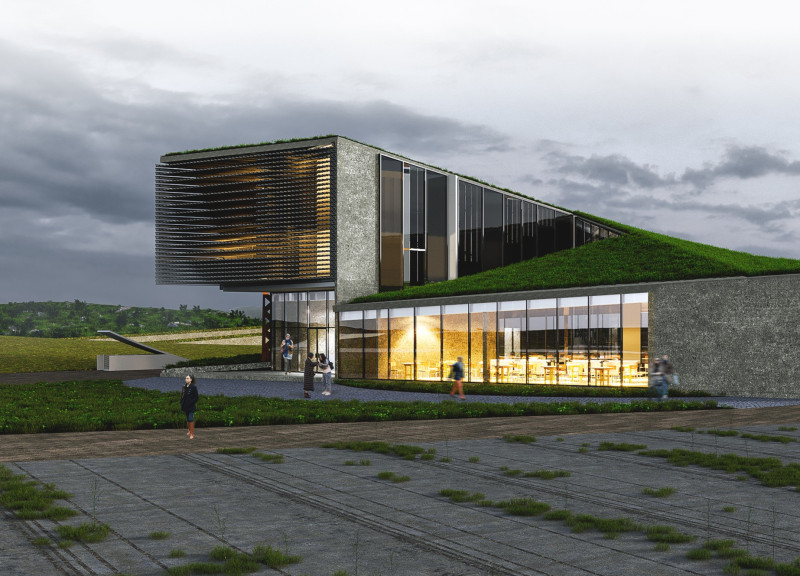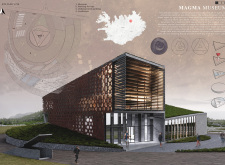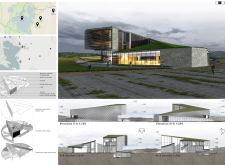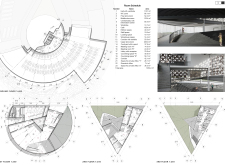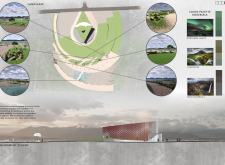5 key facts about this project
At the core of the project lies a commitment to sustainability, which is reflected in the carefully selected materials and the overall design approach. The architects have opted for a palette that includes concrete for structural integrity, natural stone that resonates with the local geology, and timber for warmth and comfort within interior spaces. The use of large glass panels for façades integrates the interior of the museum with the exterior, allowing natural light to permeate the space while providing breathtaking views of the surrounding landscape. This thoughtful engagement with the environment allows the museum to become a part of the Icelandic scenery, rather than imposing upon it.
Strategically organized, the Magma Museum includes multiple functional areas such as exhibition halls, educational spaces, a café, and community gathering rooms. The layout is designed to facilitate an easy flow of movement, encouraging interaction and exploration. The ground floor serves as a welcoming entry point, with the central lobby acting as a hub that connects various program areas. This arrangement underscores the project’s ambition to foster a sense of community among visitors, enabling diverse activities ranging from formal exhibitions to casual meetings and educational workshops.
One of the unique design approaches employed in the Magma Museum is its responsiveness to the natural landscape. The architects have drawn inspiration from the surrounding geology, shaping the building's forms to mimic the organic lines and structures found in volcanic rock and terrain. This not only enhances the aesthetic appeal of the museum but also creates a dialogue between the architecture and the natural environment. The choice of a living roof demonstrates an innovative approach to sustainability, promoting biodiversity and capitalizing on natural insulation while enriching the building's connection to its geography.
The design incorporates advanced environmental strategies that prioritize energy efficiency and minimize ecological impact. By utilizing local materials and adopting green technologies, the building aligns with modern principles of responsible architecture. This attention to environmental stewardship not only helps in reducing the carbon footprint of the museum but also serves as an educational opportunity for visitors to learn about sustainable practices through direct engagement with the structure itself.
In essence, the Magma Museum is more than just an architectural endeavor; it is a platform for education, community engagement, and cultural enrichment. The incorporation of elements that facilitate exploration and learning enhances its role as a significant addition to Iceland's cultural landscape. The project encapsulates the essence of local geology while providing spaces that inspire curiosity and appreciation for the natural world.
For those interested in delving deeper into the architectural intricacies and thoughtful design of the Magma Museum, exploring the architectural plans, sections, and detailed designs will provide valuable insights. The project stands as a testament to how architecture can beautifully intersect with the environment while fulfilling a vital community function. Interested readers are encouraged to review the project presentation for a more comprehensive understanding of its architectural philosophy and unique design attributes.


